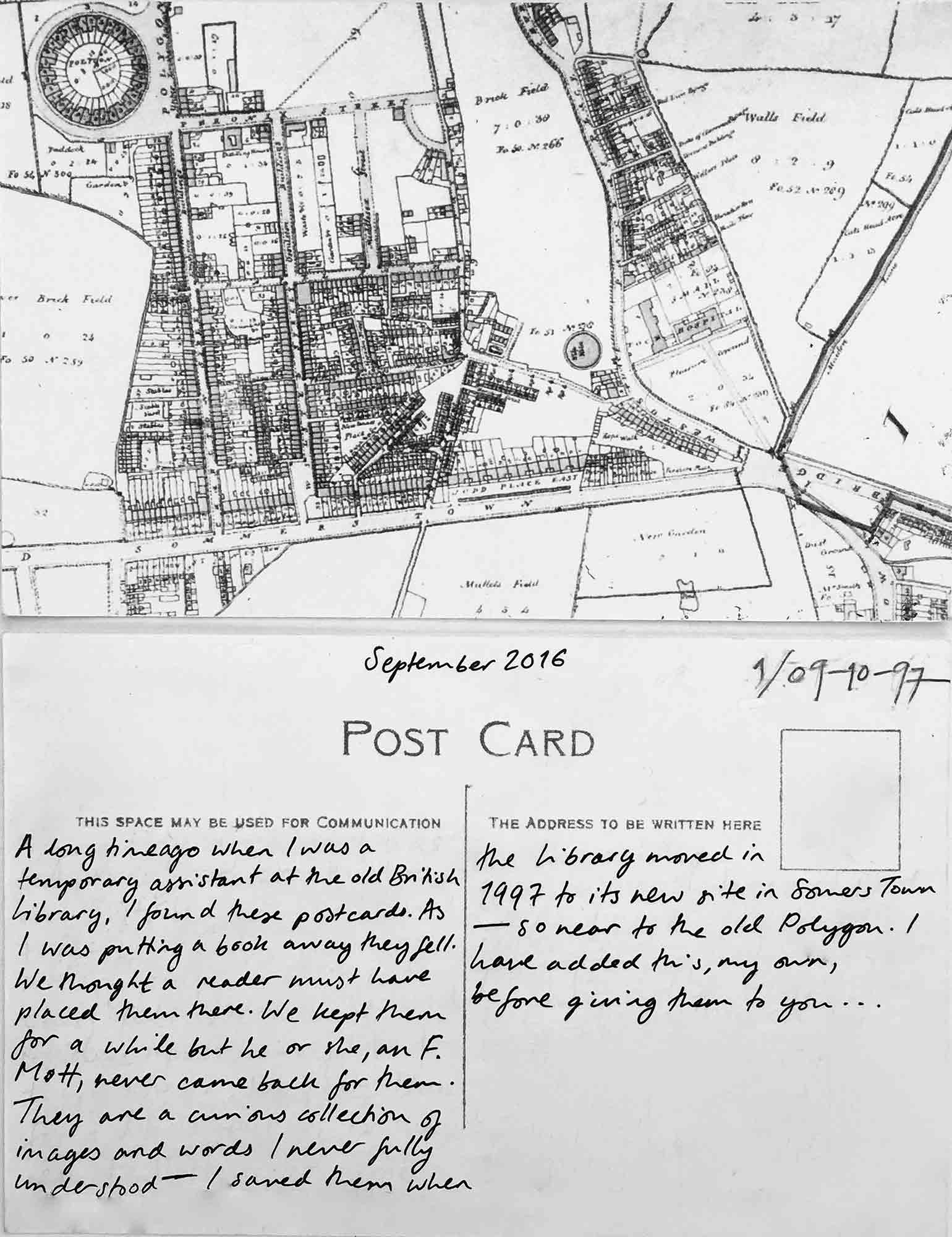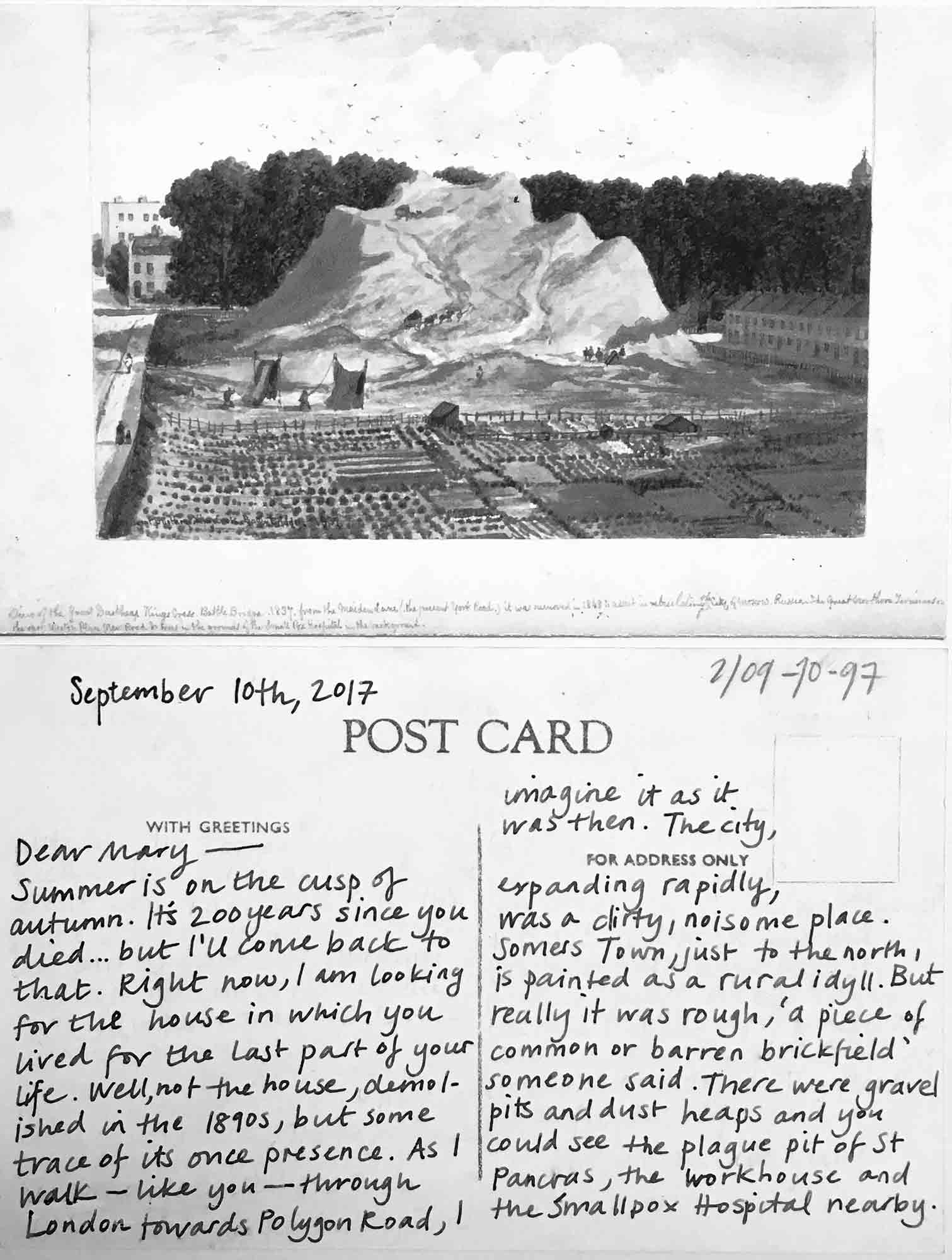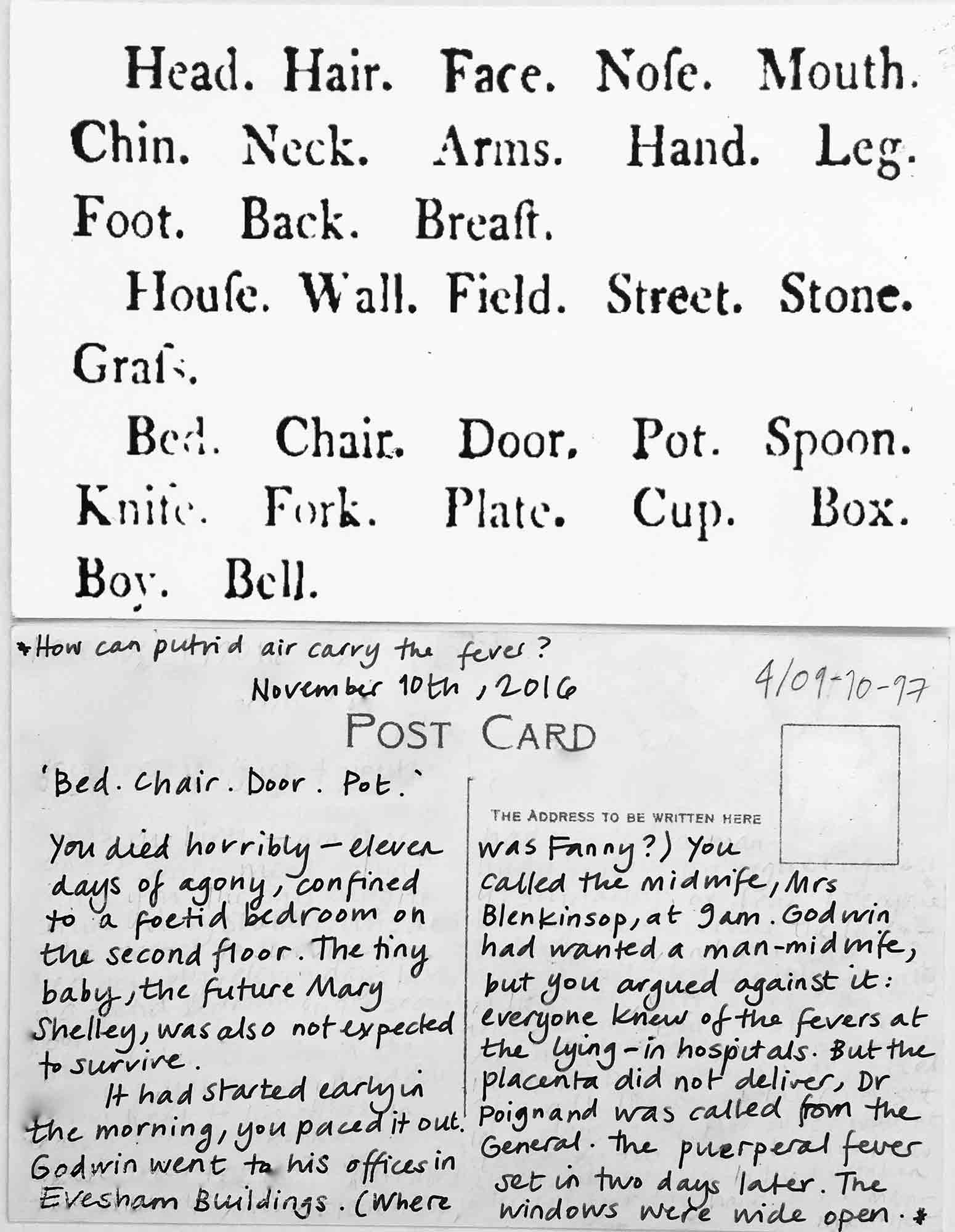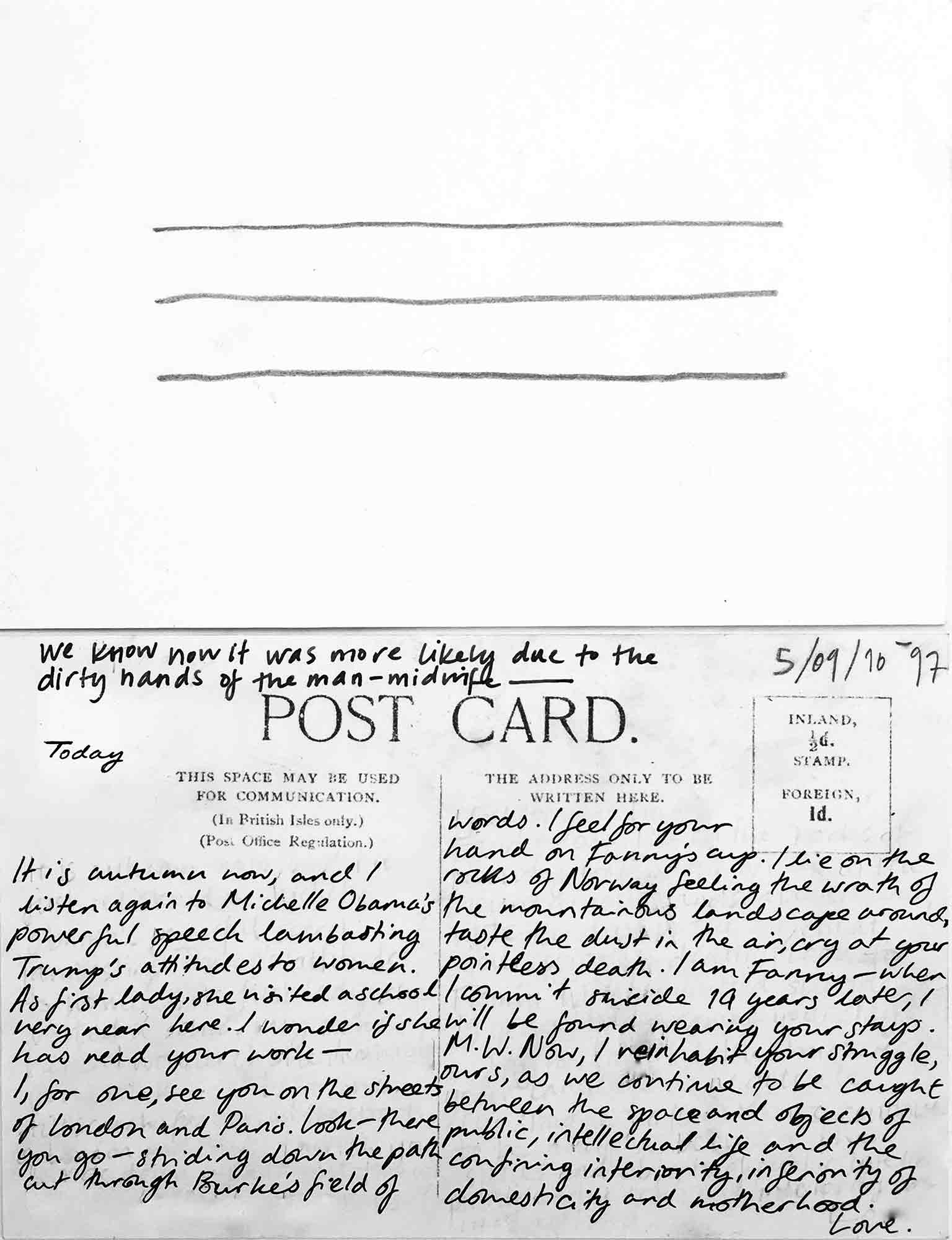




‘9 September 1977,
and I write to you that I love the delicate levers which pass between the legs of a word and itself’
Jacques Derrida, The Post Card: From Socrates to Freud and Beyond (1980).
Excerpt from: Emma Cheatle, ‘Between Landscape and Confinement: Situating the Writings of Mary Wollstonecraft’ (2017), in Hélène Frichot, Catharina Gabrielsson, Helen Runting (eds), Architecture and Feminisms, London: Routledge
This piece of writing is an excerpt from an essay that speculates on the importance of spatial and material references to the eighteenth-century feminist Mary Wollstonecraft. The essay uses critical and creative writing to present the way in which Wollstonecraft’s feminism developed through references to landscape, domestic objects, and interior space. There are two sections. ‘Landscape’ (reproduced here) sets out the way that Wollstonecraft used the material motifs of place, air, and built structure to repudiate Edmund Burke’s condemnation of the French Revolution. Her subsequent book, on the natural landscape of Scandinavia, dwells on the detailed materiality of place to argue that Burke’s gendered tropes of ‘sublime’ and ‘beautiful’ are interdependent and grounding rather than in terrifying opposition. ‘Confinement’ draws out Wollstonecraft’s seemingly contradictory positions towards domesticity: though she was known for her caustic rejection of the conventions of Georgian marriage, domesticity, and property, and their ensuing confinement of women, she carefully positioned the objects of domesticity at the centre of family life. Her own maternal ‘confinement’ at home in the Polygon, Somers Town, London, resulted in the birth of her second child – the future Mary Shelley – and her own death eleven days later.
In the essay, the critical text is punctuated with ‘found’ postcards (figures 1–5) – creative texts composed whilst walking through Somers Town in search of the signs of the long-vanished Polygon. Written to Mary as ‘love letters’, these provide an alternative literary thread, drawing out imagined, personal detail. Written now into the past, and both intimate and public, the postcards recall Jacques Derrida’s The Post Card: From Socrates to Freud and Beyond (1980) where the ‘post card’ operates as a material and metaphorical ‘lever’, a switch-point or gear, to reconnect time, place, and people.
Emma Cheatle is a Senior Lecturer at University of Sheffield, UK, where she teaches MA Architectural Design Thesis, the Critical Spatial Theory module, and humanities across the School of Architecture. Trained as an architect, she undertook her PhD Architectural Design at the Bartlett School of Architecture, UCL with Dr Penelope Haralambidou and Professor Jane Rendell. Awarded a 2014 RIBA President’s Award for Outstanding PhD Thesis, her doctoral research is published as the book: Part-architecture: The Maison de Verre, Duchamp, Domesticity and Desire in 1930s Paris (Routledge, 2017). She is working on a second book, The Architecture of Lying-in: From the Dark and Airless Room to the Hospital for Women, a history of maternity spaces in England. Her essay ‘As/Saying Architecture: A Ficto-spatial Essay of Lying-in’ is forthcoming.
Focussing on domestic and public architectures for health or those predominantly used by women, Emma develops tactics of critical-creative essay writing to ‘reconstruct’ and critique the lives of buildings as sites of social history. Interested in the interrelatedness of writing and drawing, her work uses text, both fictional and theoretical, combined with drawing and audio to give voice to lost or overlooked subjects and objects. Emma is also currently involved in a broader research project on urban common land (AHRC Major Award – ‘Wastes and Strays: the Past, Present and Future of Urban Common Land’), and an ongoing research project with Catalina Mejía Moreno that develops feminist tactics in architectural history and theory teaching (‘Fielding Architecture: Feminist Practices for a Decolonised Pedagogy’).
My work has evolved a critical-creative form of history/theory writing in architecture. It responds to the critical thinking of feminist, philosophical, psychoanalytic and social researchers such as Luce Irigaray, Hélène Cixous, Sigmund Freud, Jacques Lacan, Jane Rendell, Walter Benjamin, Rosi Braidotti, Kath Shonfield and Michel de Certeau, the art writing of Meike Bal and more recently the creative ethnographic research of Trinh T. Minh-ha. The critical is positioned in dialogue with creative and fictional pieces which establish the often lost or silent voices of women protagonists into histories of architecture – these draw on the literary writing of Virginia Woolf, Alain Robbe-Grillet, Maggie Nelson, and on the architectural drawing and art practices of Jennifer Bloomer, Diller and Scofidio, Sophie Calle, and Sharon Kivland.
Katerina Bonnevier, Behind Straight Curtains: Towards a Queer Feminist Theory of Architecture (Akademisk avhandling, 2007).
Jennifer Bloomer, ‘Big Jugs’, 1991 in Jane Rendell, Barbara Penner and Iain Borden, Gender Space Architecture: An Interdisciplinary Introduction (London: Routledge, 2000) 371–384.
Mieke Bal, Louise Bourgeois’ Spider: the architecture of art-writing (Chicago and London: The University of Chicago Press, 2001).






































































